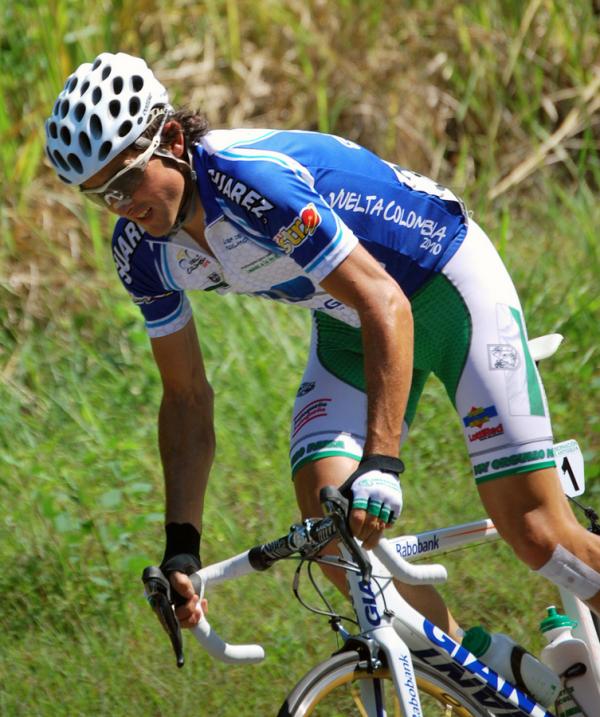HES positives could be linked to EPO use, doctor says
Cycling Ireland Medical Officer explains why substance is banned and dangerous


The positive tests for Ezequiel Mosquera and Oscar Sevilla for Hydroxyethyl starch (HES) could be linked to use of EPO, Dr Conor McGrane, Medical Officer for Cycling Ireland told Cyclingnews. Both Mosquera and Sevilla have maintained their innocence.
Mosquera, who tested positive for Hydroxyethyl during the Vuelta a España and Sevilla, who was found to have the drug in his body during the Tour of Colombia, could face suspensions if found guilty. While the drug is not part of the World Anti-Doping Agency's (WADA) banned substance list, its use is, as the only way to take it is through a transfusion – a procedure that is banned by WADA.
“It expands your plasma volume,” McGrane told Cyclingnews. “It doesn’t increase or decrease the number of red blood cells you have but it will dilute them so if you have a hematocrit test it will be lowered by taking it.
“If a cyclist had a blood transfusion or took EPO, that would cause the hematocrit to go up. By using the Hydroxyethyl, it would keep the extra blood cells, but your blood would be diluted so it would look more normal. It’s basically a masking agent. The substance isn’t banned but they only way you can take it is through intravenous transfusion and that is banned.”
Hydroxyethyl is typically used in hospital emergency rooms but according to McGrane it would be easy for a doctor to source and administer the drug to an athlete, however, side effects could be fatal.
“If given properly you can get mild flu-like reactions. If you’re allergic you can get bad reactions to it. It can be potentially fatal and can cause your blood to clot. If you’re using it to cover up doping, you’re increasing the risks further.
“Certainly in the larger races when they’ve searched rooms for intravenous kits for infusions, it’s made it more difficult to use, but presumably it’s still being used. I couldn’t tell you how much though.”
Get The Leadout Newsletter
The latest race content, interviews, features, reviews and expert buying guides, direct to your inbox!
Hydroxyethyl can be administered within a couple of hours and has a half-life of less of less than a day, meaning that it would only show up in a test taken 24 hours after the dosage was taken.
“It shows up in the urine with a half-life of a day and half depending on how much you took.
“You could do it in an hour or two, any faster and you could run into difficulties. A blood transfusion to accompany that would take the same amount of time. It’s only really the next day you’d test positive for it.”
Daniel Benson was the Editor in Chief at Cyclingnews.com between 2008 and 2022. Based in the UK, he joined the Cyclingnews team in 2008 as the site's first UK-based Managing Editor. In that time, he reported on over a dozen editions of the Tour de France, several World Championships, the Tour Down Under, Spring Classics, and the London 2012 Olympic Games. With the help of the excellent editorial team, he ran the coverage on Cyclingnews and has interviewed leading figures in the sport including UCI Presidents and Tour de France winners.
